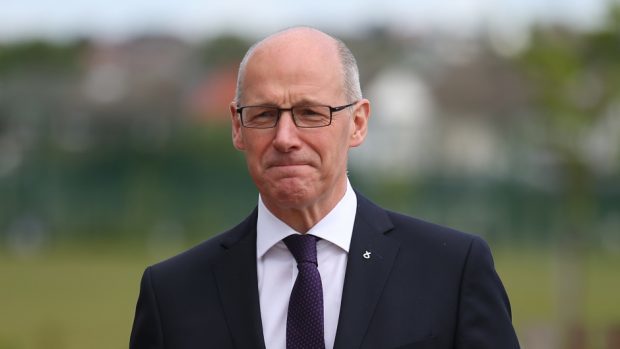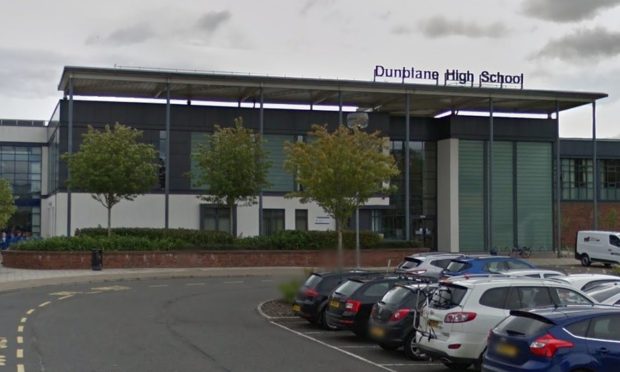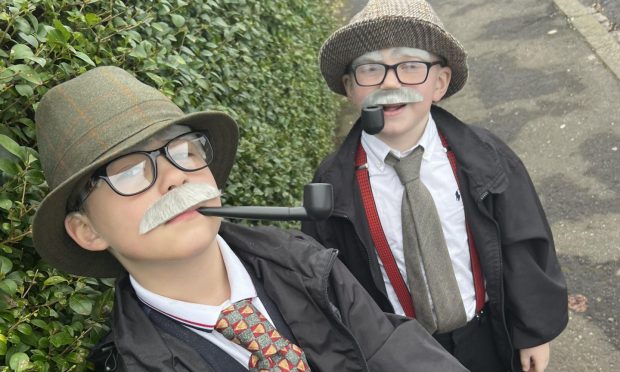When Nicola Sturgeon made John Swinney her Education Secretary more than four years ago he had built up a reputation as a safe pair of hands.
Ms Sturgeon said putting her most experienced politician and her deputy first minister in the role was an acknowledgement of how important children and schools were to the Scottish Government.
If you are not, as first minister, prepared to put your neck on the line on the education of our young people then what are you prepared to? It really matters.”
Nicola Sturgeon
Mr Swinney’s appointment came less than a year after Ms Sturgeon had invited voters to “judge” her on her education record – and, in particular, the Scottish Government’s pledge to close the attainment gap between pupils from rich and poor backgrounds.
“If you are not, as first minister, prepared to put your neck on the line on the education of our young people then what are you prepared to. It really matters,” Ms Sturgeon told those at the SNP conference in August 2015.
Since then anyone choosing to take Ms Sturgeon at her word and come to a judgement on how education has been handled under her and Mr Swinney would reach an extremely harsh verdict.
As he faces a vote of no-confidence at Holyrood following this year’s humiliating coronavirus exams fiasco, Mr Swinney’s once-sound reputation has been battered by a catalogue of controversies, of which the latest is the most damaging.
Mr Swinney arrived as Education Secretary after nine years as Finance Secretary, during which time he had received praise for balancing the books.
But cold-blooded expertise with numbers and balance sheets appears not to have translated into the people skills required to raise standards in the classroom and deal with teachers and parents.
Admittedly, the education brief is one of the most challenging in government. But given Ms Sturgeon’s willingness to stake her personal reputation on schools, Mr Swinney’s performance has created a huge problem for her.
Mr Swinney arrived as Education Secretary in May 2016 with the express aim of turning around schools following Angela Constance’s less than convincing performance in the role. (Derek Mackay was made Finance Secretary, an appointment that ended in tears.) Despite the SNP being in government since 2007, the attainment gap was widening, teaching unions were concerned about workload and the education system slipping down international league tables.
But Mr Swinney was soon bogged down in high-profile controversies, which were more characteristic of his ill-fated spell as SNP leader than his surefooted running of the finance department.
Between 2000 and 2004 Mr Swinney led the SNP in opposition, but struggled to unite a bitterly divided party, finally resigning after a poor showing in the European elections.
Here are some of the problems and disputes that have marked Mr Swinney’s career as Education Secretary:
U-turns on flagship Education Bill
In June last year Mr Swinney scrapped his Education Bill, a piece of legislation that had been promoted as the vehicle for far-reaching reforms for Scotland’s schools.
Originally proposed in June 2018, the Bill was intended to introduce a new Headteachers’ Charter giving school leaders the power to set the curriculum, hire staff and control their own finances.
It was also brought forward to underpin new regional bodies set up to support school improvement, known as regional improvement collaboratives.
The government also wanted to disband the General Teaching Council for Scotland and set up a new Education Workforce Council in its place.
Mr Swinney was unable to secure enough support to get his proposals through Holyrood and was forced into what his opponents described as a humiliating U-turn. Instead the Education Secretary said he wanted to see if councils could make improvements without changing the law.
Scotland’s performance in global education league tables
At the end of last year Scotland slumped to its lowest-ever performance in maths and science in the 2018 Pisa survey, a major international study that looks at 600,000 15-year-olds from 79 countries and regions across the world.
Schools were given an average score of 489 for maths and 490 for science, both slightly down on the previous survey and the worst performance since the survey began in 2000.
Pupils’ performance in reading tests recovered, compared to the last survey in 2015, but Scotland’s average score of 504 only returned it to the level it was at in 2012. The figures also showed Scottish pupils are behind their English counterparts.
Attempts to close the attainment gap between the richest and poorest pupils also appear to have stalled since 2015. There is now an 86-point gap between the reading scores of the poorest and wealthiest pupils – equivalent to three years’ schooling – a slight increase on the 83-point gap in 2015. In science the gap has also grown slightly from 97 to 98 points, while in maths it has reduced from 87 to 83 points.
Revolt over controversial primary one testing
The 63-61 vote in parliament was not binding, but demonstrated a lack of support for the computer-based assessments for four and five-year-olds. Opposition parties claimed parents did not trust the tests. Mr Swinney pressed ahead with the plans, claiming the criticism was politically rather than educationally motivated. Eventually he promised to overhaul the tests.
The assessment were introduced for children in P1, P4, P7 and S3 as a response to falling standards of literacy and numeracy. Following their introduction in 2017 there were reports of five-year-old pupils being left distressed, while teachers complained of problems with IT systems.
Some of the questions were deemed to be set at an inappropriate level of difficulty for pupils in P1 and charities warned the assessments were not in line with play-based learning and did not provide teachers with valuable data.
Controversy over teacher numbers
The most recent figures suggest there are 51,449 teachers in Scotland – a figure that still is not as high as the 55,089 that were in place when the SNP came to power in 2007.
Abandonment of named person scheme
Mr Swinney had been put in charge of implementing the Scottish Government’s “named person” scheme. The highly controversial plan to give every Scottish child a named person to keep an eye on their welfare was condemned as a “snoopers charter” and criticised for being unnecessarily intrusive into family life.
In September last year Mr Swinney confirmed the plan was to be abandoned after the Supreme Court ruled part of it breached human rights law.
Declining subject choice
Research carried out by the think-tank Reform Scotland claimed a sharp reduction in National 4s and 5s available in many schools is narrowing educational opportunity for children. Reform Scotland identified a “disturbing decline” in the number of National 4s and 5s pupils are being allowed to sit.
The research, published last year, found the maximum number of N4s or N5s a pupil can sit varies from five to nine depending on which school they go to.
An increase in multi-level teaching
A series of Freedom of Information requests by the Scottish Conservatives found last year that there were 112 Scottish schools where pupils were being taught at least three qualifications in a single class.
Mr Swinney dismissed concerns that this was putting teachers and pupils under pressure as a “moanfest”, arguing schools were choosing to use so-called multi-level teaching because they were empowered by a flexible curriculum.
The first of two U-turns during the coronavirus crisis
Mr Swinney was forced to about-turn on his plans for schools to return on a “blended learning” basis during the coronavirus crisis, following an outcry from parents.
The plan had been for pupils to continue studying at home combined with limited classroom time of, perhaps, two days a week at school – a plan that was attacked by education experts and parents.
Mr Swinney changed his plans following political and parental pressure, claiming the virus had been suppressed sufficiently for schools to go back on a full-time basis.
A second U-turn during the pandemic: the exams fiasco
With the Education Secretary facing a vote of no-confidence at Holyrood following the downgrading of pupils’ results, he was forced to change tack in an attempt to sort out Scotland’s exams fiasco.
The cancellation of this year’s exams as a result of the coronavirus pandemic led to pupils being graded by teachers – results which were then moderated by the Scottish Qualifications Authority (SQA).
The moderation process resulted in 124,564 pupils having their results downgraded by the SQA, the equivalent of 26.2% of all grades.
The mechanism to recalibrate grades included the past performances of schools – leading to claims that poorer pupils were being disadvantaged and discriminated against.










